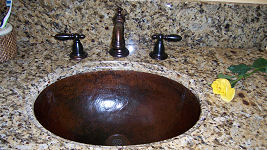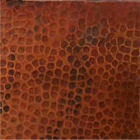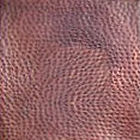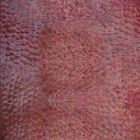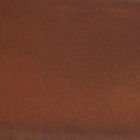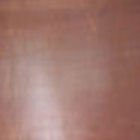 |

Frequently Asked Questions About Copper Sinks, Copper Sink FAQThe answers on this page apply either to hammered copper sinks or smooth copper sinks. Some comments might be more relevant to hammered copper kitchen sinks than to bathroom copper sinks. We will try to make it clear when in doubt. If you have any concerns about installing a copper sink in your kitchen or bathroom, it is enough to say that, no other material will surpass the natural, aged looking of a copper sink. For a Spanish, old-world, mission, and even southwest styles a hammered copper sink is the way to go. 1. Will my copper sink looking change?Answer: This depends on the initial finish. A polished finish will age faster than an already aged one. If you want to have a polished copper sink, either bathroom or kitchen, then you will have to polish it once in a while, depending on factors such as humidity, frequency of use, water hardness and the surface texture (hammered versus smooth). Polishing is a very easy process and can be done with products already available in any kitchen:
Do not get confused that this is used to clean any copper sink, this is just to polish it! So, if you have an aged one do not try any of these products on it! They will destroy the patina. 2. What is copper patina?Answer: It is a sort of coat the copper develops with time, it is an aging process and it can result in several brownish shades, and/or greenish shades depending on the environment. Certain chemicals will make it look brownish, some will make it look greenish. There is a lot of different finishes (patinas) that can be done to a copper sink, the most common ones are: Polished copper, natural copper patina, terra copper patina and dark weathered copper patina. These patinas can be present on a smooth copper sink as well as in a hammered one. Besides the polished one, the other finishes can be severly damaged with abrasives shown as cleaners in question 1. Shown below are a few samples of what different patinas look like.
3. How do I clean a copper sink?Answer: Again, it depends on the patina or copper finish your sink is. Lets handle the three most common finishes:
If your place has hard water and you copper sink is hammered or you are planning to get a hammered one, drying it with a soft cloth is recommended after each use, this will prevent the minerals to settle in the hammered footprints. Removing settled minerals might prove hard to do once they are solidified for a long period of time, the patina will be damaged if this ever happens. 4. Is a copper sink a healthy choice?Answer: Even when the food exposure to a copper sink is almost null, is known that copper is bacteria intolerant. Bacteria can't live on a humid copper surface as it can on other metals, copper is a natural antibacterial. This statement has been scientifically proven against the following five (source: antimicrobial copper properties, www.copper.org):
5. What is a copper sink gauge?Answer: Gauge measures the thickness of a copper sheet. The thicker the better. We show next the copper gauges most used in the copper industry. Regarding kitchen and bathroom copper sinks, the most common gauges are 16, 18 and 14, the smaller the number the thicker. So, 14 gauge is thicker than 16 gauge. When comparing copper sinks you can get an idea checking the weight. The heavier the smaller gauge and the better copper sink.
6. Will my copper sink last?Answer: It depends on how you care for it. Copper as a metal by itself is a soft metal. Copper sinks are made of an alloy of copper and zink, to give it strenght. It is obviously a softer material than a stainless steel sink, but if treated properly, it can last 30 or more years. Copper sinks are living sinks, which mean, they change with time, they age and as they do, the patina might change too. Patinas can go from light to dark browns to greenishes and in between, all will depend how you care for it, how you clean it, type of water you have, as well as how you use it. 7. How many types of copper sinks are there?Answer: Roughtly speaking we can clasify them in two broad ranges depending on its use: Kitchen and bathroom sinks. Within these two broad categories there are more specific ones. Copper kitchen sinks can be further divided in apron copper sinks (or farm copper sinks), non-apron copper sinks (over-mount or under-mount ones),and bar copper sinks (usually smaller size). Bathroom copper sinks can also be divided in drop-ins, under-mounted, over-the-counter and above the counter (copper bowls). |
